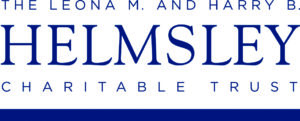
Helmsley Charitable Trust Equips 186 organizations with life-saving equipment.
A $3.7 million grant from The Leona M. and Harry B. Helmsley Charitable Trust, administered over the past three years through the South Dakota Department of Health, has saved the lives of 23 people. The LUCAS® 2 Cardiac Care Project equipped 134 EMS agencies and 52 critical access hospitals in South Dakota with the necessary tools to improve survivability in sudden cardiac arrest victims.
The LUCAS® Chest Compression System (LUCUS® 2) delivers consistent, reliable and uninterrupted chest compressions which allows healthcare providers to concentrate on other equally important aspects of patient care; providing patients with the best opportunity of survival. The LUCUS® 2 device virtually frees up one healthcare worker to perform other essential tasks.
“The LUCUS® 2 devices can save lives,” said Walter Panzirer, a Trustee of the Helmsley Charitable Trust. “People living in rural areas deserve access to the same healthcare technology as those living in metro areas enjoy. Working with the State of South Dakota Department of Health we were able to equip first responders in the state with LUCUS® 2 devices, equipment they couldn’t otherwise afford, giving cardiac patients a better chance at survival.”
“We extend our gratitude to the Helmsley Charitable Trust,” said Kim Malsam-Rysdon, Secretary of Health. “This investment in rural healthcare will help ensure South Dakotans have access to life-saving care in emergency situations, regardless of transport distance. These devices will continue to support the Department of Health’s mission to promote, protect and improve the health of every South Dakotan for years to come.”
According to those charged with using the new device, the LUCUS® 2 is making a difference when emergency medical units respond to a scene.
“The patient arrested at their place of employment,” said one South Dakota paramedic. “According to bystanders, the patient collapsed and became unresponsive. When we arrived on-scene, no CPR was in progress and after one round of manual CPR, we placed the LUCAS®. The patient achieved ROSC (return of spontaneous circulation) on-scene and we did not lose them again. The patient was discharged alive without deficits.
“The LUCAS® is a huge help because it frees up a crew member to do other interventions,” he added. “It makes me feel more confident because I can think and focus on the next steps. It [LUCAS®] played a huge role in this patient surviving.”
The $3,777,926 grant was implemented in January 2014, placing a total of 202 devices in 186 South Dakota EMS agencies and hospitals.
